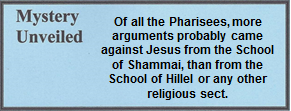12.02.04 Lk. 14:1-6
MAN HEALED ON THE SABBATH
1 One Sabbath, when He went to eat at the house of one of the leading Pharisees, they were watching Him closely. 2 There in front of Him was a man whose body was swollen with fluid. 3 In response, Jesus asked the law experts and the Pharisees, “Is it lawful to heal on the Sabbath or not?” 4 But they kept silent. He took the man, healed him, and sent him away. 5 And to them, He said, “Which of you whose son or ox falls into a well, will not immediately pull him out on the Sabbath day?” 6 To this they could find no answer.
“Body was swollen with fluid.” The physical description of the ill man suggests that he may have had a condition known as dropsy[1] or hydropsy, which today is more commonly known as edema.[2] The biblical phrase is from the Greek word hudropikos (5203), meaning dropsical or suffering from dropsy.[3] Whether it was this or a similar disease, in ancient times the condition was far more serious than it would be considered today.
It was the custom that a visiting speaker or rabbi was invited to the home of one of the synagogue leaders. In this case, Jesus went to the home of a leading Pharisee.[4] While there, Jesus asked His critics if it was permissible to heal on the holy day. They refused to answer and, therefore, Jesus healed the man. Jesus then spoke of their distorted values. Their tradition permitted a son (a beloved member of the family) or an ox (a great asset) to be rescued if trapped or injured. Yet, they objected to the healing of a man who was suffering from an illness.
Jesus was again accused of being a Sabbath breaker, whereas in reality, the opposite was true. He demonstrated the love of God and the importance of every person, in light of a holy day in a sin-infested world. Luke recorded four healings by Jesus on the Sabbath but, no doubt, there were many others as well. These healings gave critics ample argument, while He continued to demonstrate the love of God and His kingdom.
Two major schools of theology within the Pharisee sect had numerous heated debates, one of which pertained to Sabbath restrictions.[5] The School of Shammai said it was unlawful to comfort the sick or visit the mourner on the Sabbath, but the School of Hillel permitted it. In the case of a Sabbath violation, the School of Shammai demanded physical punishment whereas the School of Hillel and most other Pharisees, as strict and legalistic as they were, offered a milder punishment that was often in the form of a monetary fine.[6] Those who confronted Jesus on healing on the Sabbath were most likely to be followers of Shammai, rather than Hillel or any other sect.

[1]. Blomberg, “The Authenticity and Significance of Jesus’ Table Fellowship with Sinners.” 241.
[2]. http://en.wikipedia.org/wiki/Edema Retrieved October 15, 2013.
[3]. Vine, “Dropsy.” Vine’s Complete Expository Dictionary. 2:185.
[4]. Just as the gospel writer used the phrase “leading Pharisees,” Josephus expressed the same idea using the term “principal men” in describing those who were responsible for accusing Jesus before Pilate. See Josephus Antiquities 18.3.3.
[5]. See 02.01.14 “Pharisees,” 02.01.18 “School of Hillel,” and 02.01.19 “School of Shammai.”
[6]. Geikie, The Life and Words of Christ. 2:106.